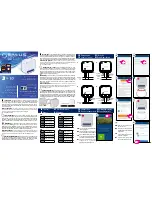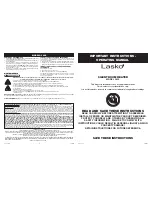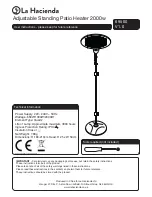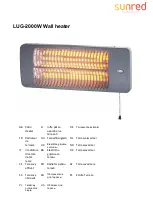
29
CAUTION! Do not use over 65% ethylene glycol or over 60% propylene glycol
antifreeze by volume.
CAUTION! Using a different type of glycol or a different % of glycol mixture than
the system was designed for may affect the performance of the system. For example,
propylene glycol is more viscous than ethylene glycol and results in more pressure drop
and less heat transfer capability.
CAUTION! Do not use automotive coolants.
CAUTION! Do not mix brands or types of coolant and do not mix brands or types of
additives and/or extenders.
Water can be used in the coolant mixture because it is the most efficient, best known,
and universally available heat transfer agent. However, each water source contains
contaminant levels to various degrees. At operating temperatures, these contaminants
form acids or scale deposits that can reduce cooling system service life.
Rocore and engine manufacturers recommend using distilled or deionized water in
coolant mixtures. When distilled or deionized water is not available, use the following
guidelines:
-
Never use salt water.
-
Never use softened water.
-
Select the best quality fresh water available.
-
Test the water to determine water quality (See below).
-
Never use water alone as a coolant. Coolant additives are required because
water is corrosive at normal system operating temperatures. However,
adding coolant additives to poor quality water does not ensure the water will
be acceptable.
Water can be used in a coolant mixture if contaminant levels are not excessive and
proper cooling system maintenance is performed. Water used in coolant mixtures must
conform to the following established limits:
Acceptable Water Quality for Use in Cooling Systems per ASTM D-4985
Properties
grains/gal
ppm
Chlorides
2.4 max
40 max
Sulfates
5.9 max
100 max
Total Hardness
10 max
170 max
Total Solids
20 max
340 max
pH (5.5 to 9.0)
N/A
N/A
To determine water quality in your area, contact the city water department or an
independent laboratory that can test the water quality.
Some coolants may have more stringent water qualities than the above, so check your
coolant manufacturer’s water requirements.
















































